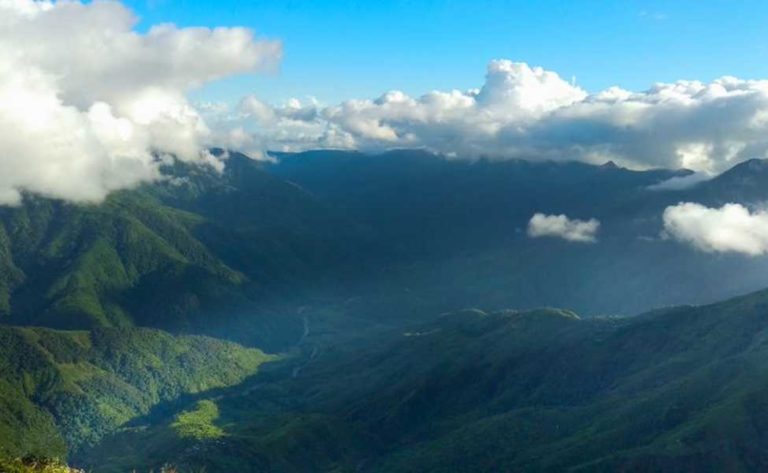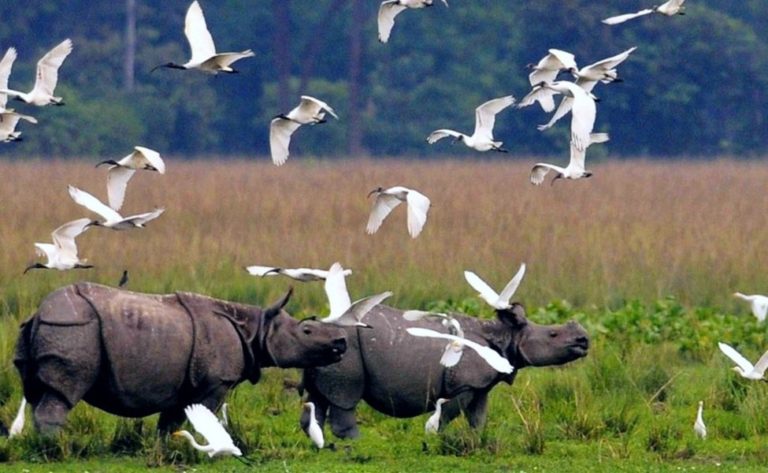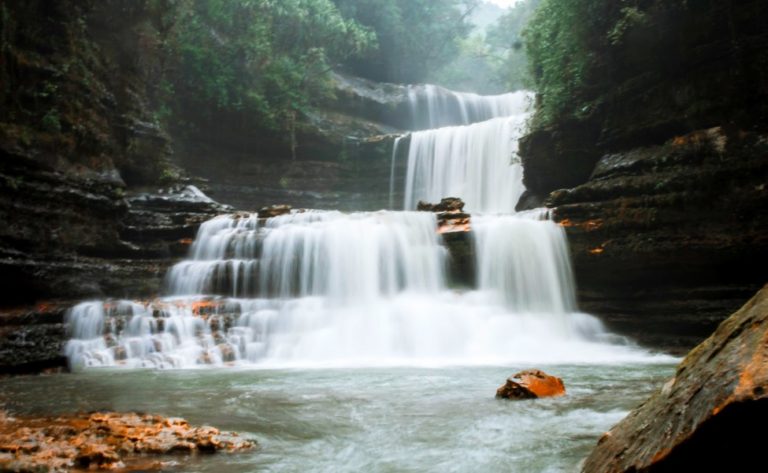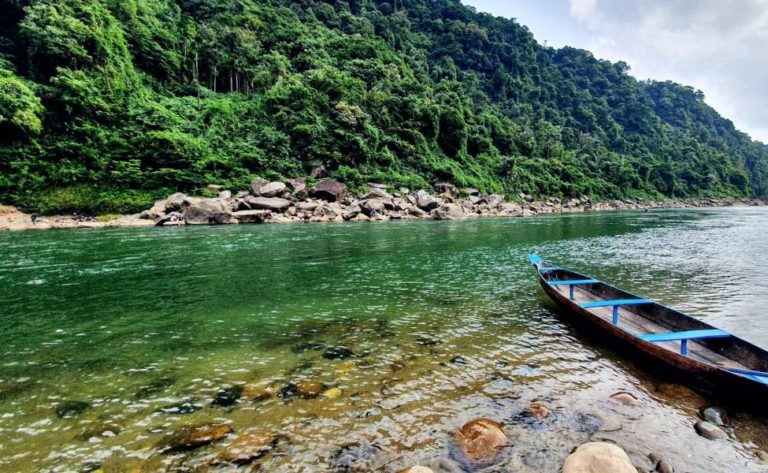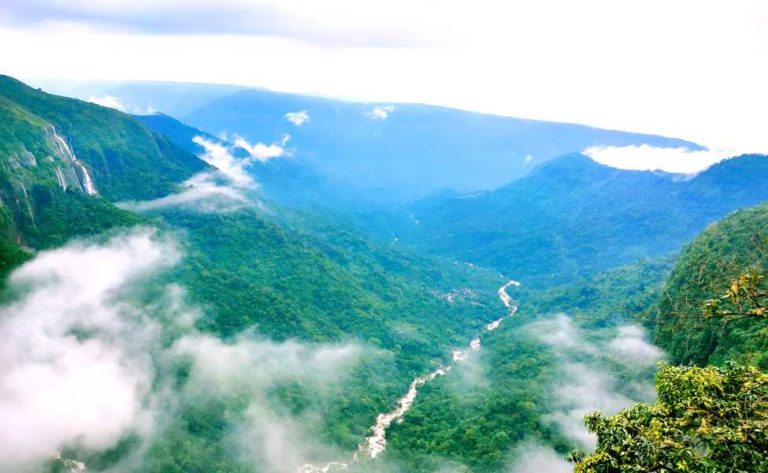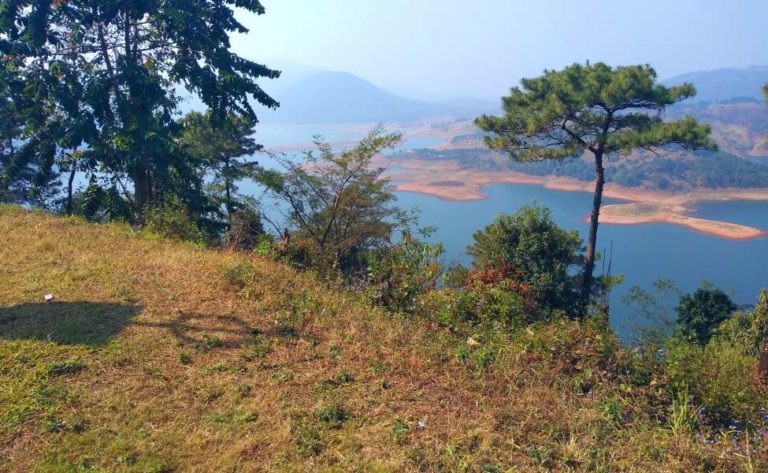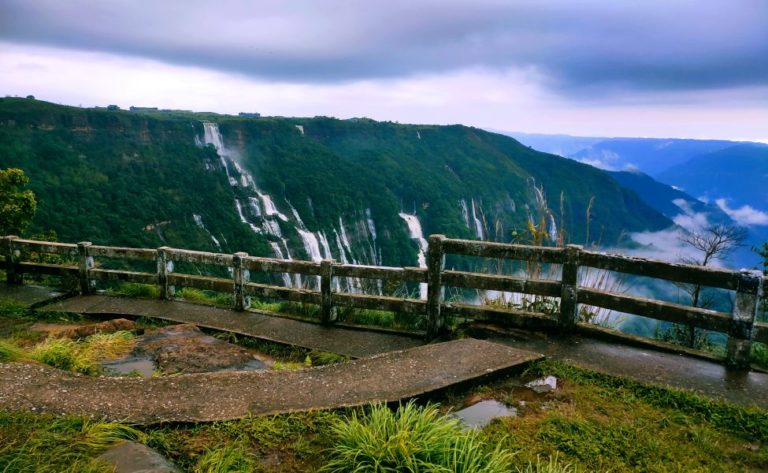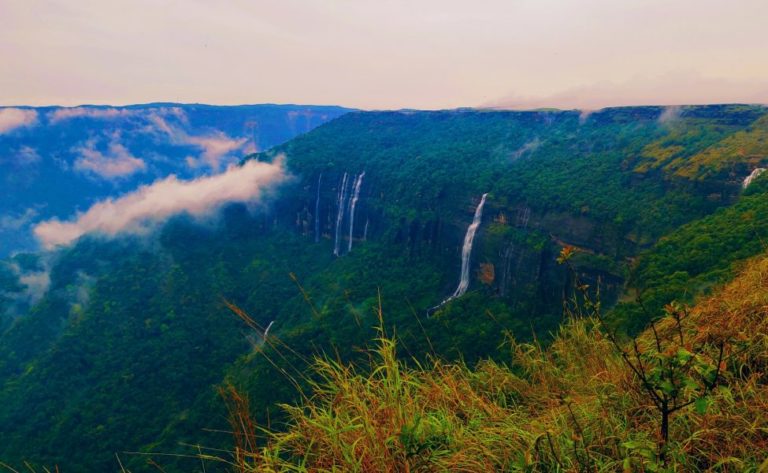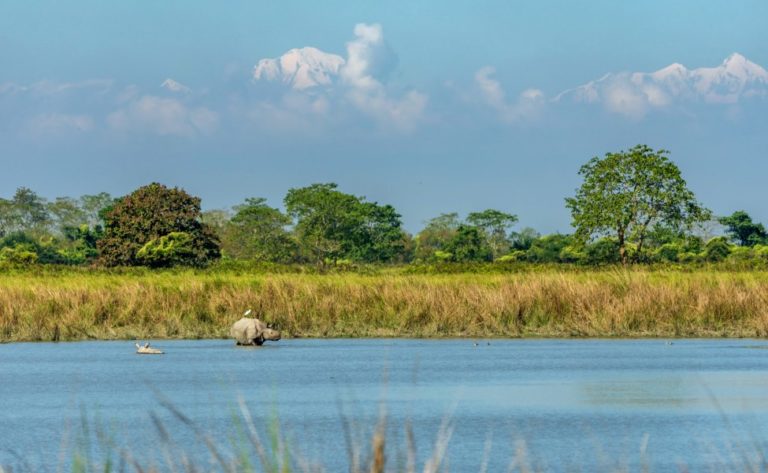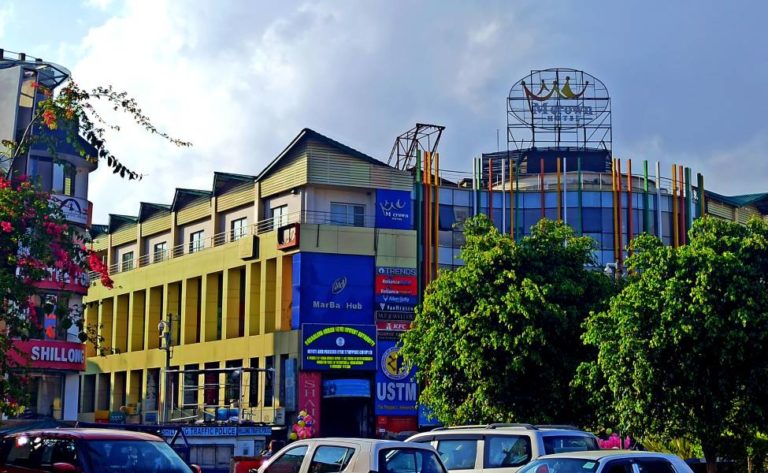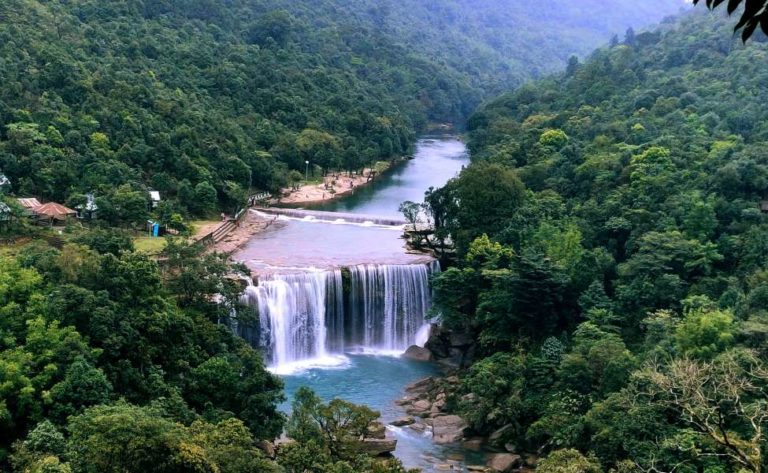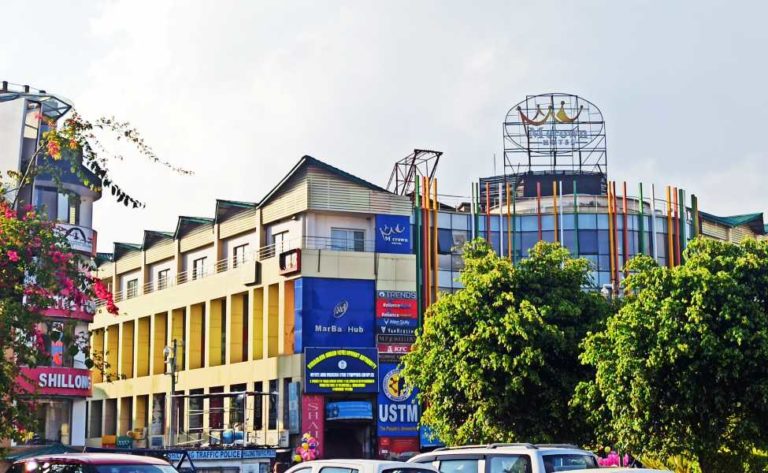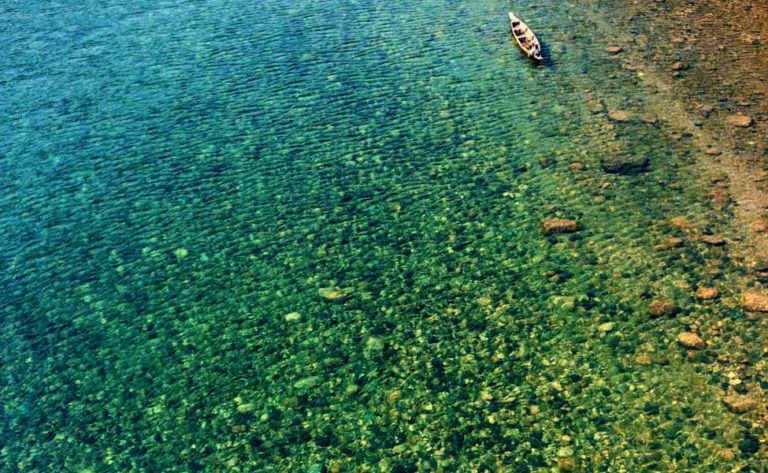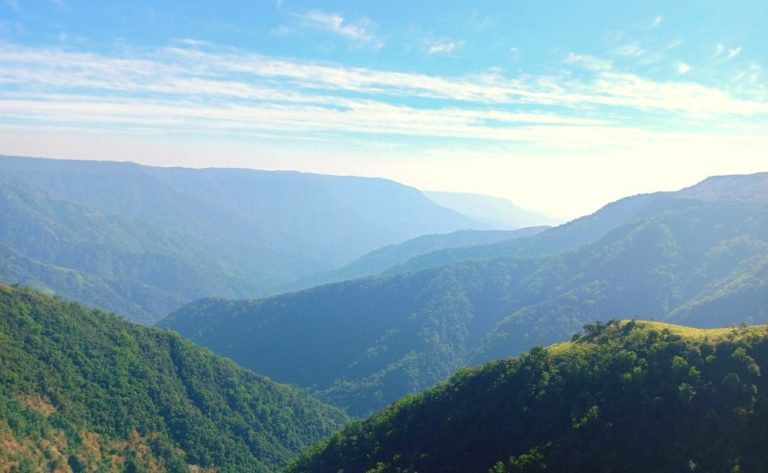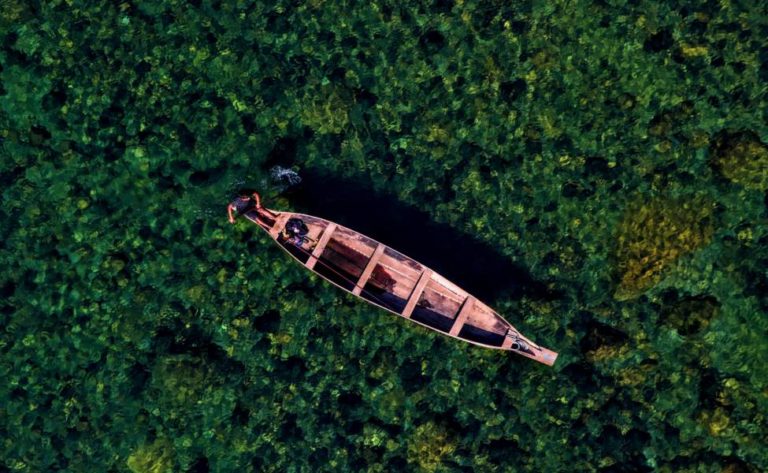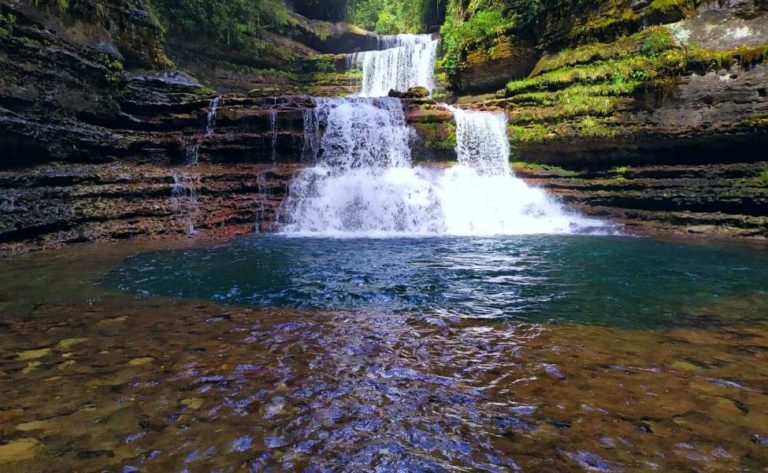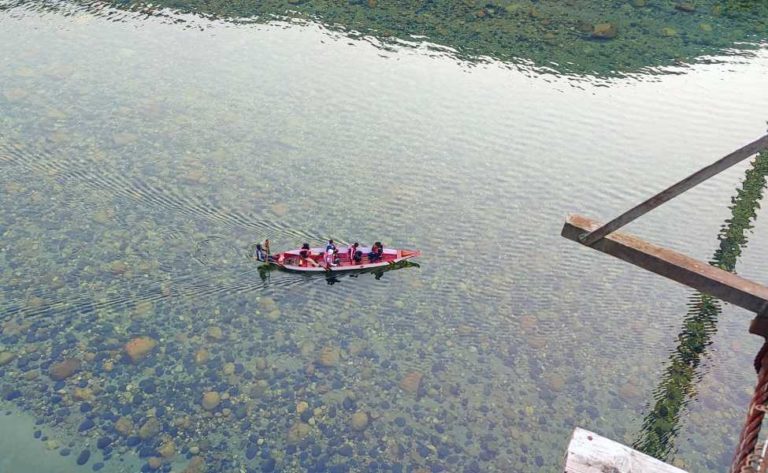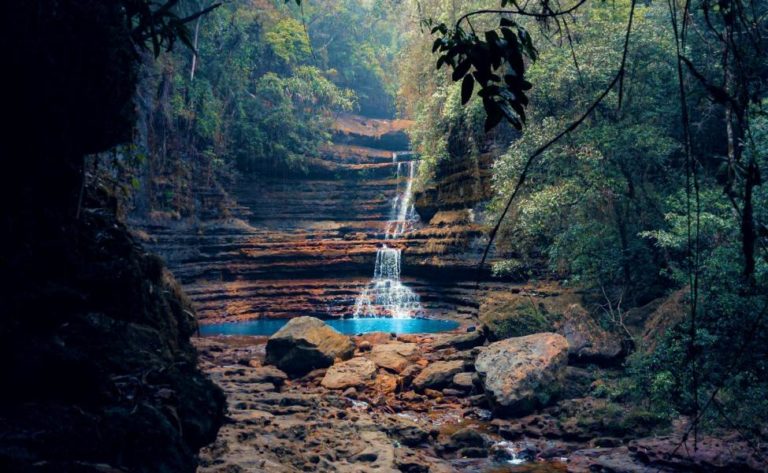
Guwahati Tourism
Guwahati Overview
Guwahati, the main city in the area, is considered the entrance to northeast India. It is located between the Brahmaputra River’s southern bank and the Shillong plateau’s foothills.
The Kamakhya temple, located atop Nilachal Hill, is a sacred location for tantric Hinduism. Guwahati, in addition to Kamakhya, includes other old Hindu temples, and the Umananda Temple, Navagraha Temple, and Basistha Temple.
What Makes Guwahati so Famous?
Guwahati is often known as the Gateway to the Northeast, and there are plenty of reasons why you should visit the city. It’s the largest and most important city in North-East India, with great transport links and a strategic location.
You’ll find an abundance of temples here, with the earliest epigraphs dating back to the 8th and 9th centuries. And if you’re looking for something a bit different, try the Assamese thali eateries that serve meals in bell metal plates.
But that’s not all – Guwahati is also home to the rare one-horned rhinoceros, making it an ideal spot for wildlife lovers too. So don’t miss out – come and experience why Guwahati is so special!
Best time or When to visit Guwahati
Guwahati is best visited between October and March. The weather is temperate and pleasant throughout this time, making it ideal for outdoor activities like seeing the city’s sites and temples, visiting local animal sanctuaries, and having picnics along the Brahmaputra River. Furthermore, this is peak tourist season in Guwahati, so there will be lots of other people to mingle with.
If you want to attend one of Guwahati’s famed festivals, the ideal time to come is in April during the Bihu festival. This event marks the start of the Assamese New Year and is a time of immense excitement and joy. Traditional music and dance performances, as well as competitions, feasts, and other events, are all part of the celebration.
If you don’t want to go to festivals or popular tourist seasons, you should visit Guwahati between June and September. The monsoon season is in full force at this time, bringing with it lush foliage and copious rainfall. Heavy rain and flooded roads, on the other hand, might make travel difficult, so be prepared for some disruption.
Finally, the best time to visit Guwahati is between October and March, when the weather is temperate and pleasant, ideal for outdoor activities. If you wish to attend festivals or explore the city during the monsoon season, you might consider travelling at another time of year. Whatever time of year you visit, Guwahati is guaranteed to provide a rich cultural experience as well as spectacular natural beauty.
How to reach{train, air, road}?
By road
Assam State Transport Corporation (ASTC) and other private buses provide easy transit between Guwahati and a number of other towns and cities. Depending on their demands, passengers can choose between luxury, air-conditioned, deluxe, or Volvo buses. Because numerous main national roads converge at Guwahati, it is straightforward to travel from West Bengal and other northeastern states, and Nagaland.
By Train
The primary train station in Guwahati is Guwahati Junction, with Kamakhya Junction as the second largest. Guwahati offers excellent train connectivity to major railway terminals across India and trains to all significant cities are available from the station. The quickest option is the Rajdhani Express, which takes 34 hours to reach Guwahati from New Delhi.
By Air
Lokpriya Gopinath Bordoloi International Airport, popularly known as Guwahati International Airport, is the principal airport serving all of northeast India. The airport provides decent links to all major Indian cities as well as a few chosen overseas destinations like as Bangkok and Paro. The airport is 20 kilometers center of the city center. You may take a cab or a bus from the airport to the city center or your hotel.
Language, History, and people of Guwahati
Nestled amidst the rolling hills of Assam, Guwahati is a city that pulsates with a unique energy. It is a hub of linguistic diversity, where the sounds of different languages mingle to create a rich and vibrant cultural tapestry.
From the melodic and musical Assamese to the brisk and bold Bengali, the city is a melting pot of languages, each with its own unique character and charm. But the linguistic diversity of Guwahati is only one aspect of its rich cultural heritage.
The city is steeped in history, its past is woven with tales of bravery, sacrifice, and resilience. Guwahati has been a hub of cultural exchange for centuries, and its historical landmarks are a testament to its rich and colorful past.
The people of Guwahati are as diverse and dynamic as the city itself. They are a proud and passionate bunch, deeply connected to their land and heritage. They celebrate their customs and traditions with joyous abandon, and their hospitality is renowned across the land.
Embark on a journey of discovery in Guwahati, where the language, history, and people come together to create a unique and eclectic ecosystem. Get ready to be captivated by the city’s charm, and be forever changed by its beauty.
Travel Guides
Top Tourist Attractions in Guwahati
Umananda Temple
Umananda is a Shiva temple located on Peacock Island in the river Brahmaputra, on the summit of the hill known as Bhasmakala or Bhasmakuta. However, an earthquake in 1897 entirely destroyed it, and it was eventually restored by a rich local businessman. The Umananda temple was exquisitely crafted by talented Assamese craftsmen. The temple also holds the images of eleven other Hindu gods in addition to Lord Shiva. Peacock Island, one of the smallest inhabited islands, is also one of the most attractive sites in Guwahati.
Peacock Island
Umananda Island, the world’s smallest river island, is a calm, tranquil spot where humans and nature cohabit. Umananda Island is the source of the Brahmaputra River, which flows through the heart of Guwahati. Humans have not yet wreaked havoc on an island that has inspired innumerable legends. Because of its form, it was nicknamed Peacock Island by British colonists. The island is home to Golden Langurs, a critically endangered animal held in high regard by the Himalayan people.
Kamakhya Temple
The Kamakhya Temple, located on Nilanchal Hill in the western part of Guwahati, Assam, is one of the most venerated temples of Goddess Shakti in India. According to Hindu texts, the Kamakhya Temple is one of the four important Shakti Peethas (Temples with greatest powers of divinity) in the country. Since it honours women’s capacity to carry offspring, the Kamakhya Temple is regarded by the Tantrik branch of Hinduism as very fortunate. It is a marvel to behold and was built and destroyed multiple times between the eighth and the seventeenth centuries. It is specially adorned for the three to four-day Ambubachi Festival and Fair in June.
Guwahati Zoo
The Guwahati Zoo, also known as the Assam State Zoo cum Botanical Garden or just the Assam State Zoo, is a 430-acre wildlife haven that has won recognition as one of the top zoos in the country. The protected area, which is located in the thickly wooded Hengrabari Forest Area in the centre of Guwahati, has maintained its dynamic link to mother nature. The largest of its type in the country’s North-East, the Assam Zoo cum Botanical Garden is usually referred to as Guwahati’s “green lung.” It is situated about near tn mighty Brahmaputra River.
Assam State Museum
Located in Dighali Pukhuri tank in the heart of Guwahati, Assam Rajyik State Museum, also known as Assam State Museum, is a renowned tourist destination. It is one of the most well-known museums in North-East India and offers insights into both the area’s recent history and rich ancient culture. Due to its prominent placement in the city centre, Guwahati draws many of visitors and history buffs. A substantial collection of sculptures and artifacts from the fifth to the twelfth century as well as more modern World War II artefacts are housed at the Museum. This museum is a great place to visit if you want a glimpse into North-east India’s past.
Guwahati War Memorial
In Latasil, Guwahati, next to Dighalipukhuri Park, the Guwahati War Memorial remembers those who gave their life in defence of their nation. Although the memorial’s foundation was set on May 18, 2015, access for visitors was not granted until December 2016. The memorial, which was erected as a mark of respect for the brave men and women who lost their lives in defence of our nation, aims to develop a feeling of patriotism in the next generation and to publicly recognise the tremendous sacrifices made by our heroic troops. The Rajya Sainik Board of the State government created the property as a well-intentioned effort to preserve the historic area’s attractiveness.
Nameri National Park
The 212 square kilometre Nameri National Park is located around 40 kilometres outside of Tezpur. In addition to tigers, elephants, and other exotic creatures, the Jia Bharali River is home to rare bird and fish species. A broad range of vegetation and animals may be found in this national park. The most well-known Deo Hanh white-winged wood duck may be found here. There are also black bears, several deer species, butterflies, fish, and elephants in this area.
Sukreshwar Temple
Historical Hindu temple 1.5 kilometers from Guwahati Railway Station, in Guwahati, Assam, is where you’ll find Sukreswar Temple. It is one of Guwahati’s most well-known Shiva temples and one of the city’s top tourist attractions. It stands on Sukreswar hill. The Ahom king Pramatta Singha erected the Lord Shiva-dedicated Sukreswar Temple in 1744 CE. King Rajeswar Singha initiated financial preparations for the temple in 1759. The temple is well known for having one of Shiva Lingam’s largest in India. According to legends, the sage Sukra worshipped Lord Shiva at this temple. According to the Kalika Purana, the hill where the saint used to worship is named as Hastagiri because it resembled an elephant’s hump.
Pobitora Wildlife Sanctuary
One of the most popular tourist attractions in Guwahati is the Pobitora Wildlife Sanctuary, which is located near the Assamese village of Mayong in the Marigaon district. In addition to offering spectacular views of the majestic Indian one-horned rhinoceros that inhabit this region in a good population, Pobitora Wildlife Sanctuary also has some impressive biodiversity. Pobitora Wildlife Sanctuary is well-known for being home to a variety of rare animals, including Asiatic buffalo, leopards, wild bears, civet cats, and more. In addition to rhinoceros.
Chandubi Lake
An earthquake formed a natural lake at the base of the Garo Hills, near Assam and Meghalaya. Chandubi Lake is its name. It is a calm and tranquil lake surrounded by tea gardens, deep forests, and little settlements. Because of its isolated position from contemporary society, the lake is free of contaminants. Chandubi Lake, which covers an area of 2000 hectares, is also proud of its unique flora and animals. It is one of the top places in the state for natural sightseeing and a must-visit picnic spot in the centre of nature. Simply staring at the refreshing beauty of Chandubi Lake may provide a sense of calm.
Dighali Pukhuri
The Digholi Pukhuri, a gorgeous rectangular-shaped artificial pond, is located in the city of Guwahati. According to mythology, Bhagadatta constructed this pond by digging a canal from the Brahmaputra River. The Ahoms utilised this waterway as a naval yard in ancient times. It is now a major tourist location in the city, where tourists may embark on boat trips and participate in other recreational activities. There is also a playground at the lake complex. Tourists and locals alike have a nice time sitting by the lake and spending time with their loved ones.
Dipor Bil
Dipor Bil is a freshwater lake located in the historic Brahmaputra river system. It is located in Assam’s Kamrup district, 18 kilometers southwest of Guwahati. The lake was recognized as a bird sanctuary in 1989 due to its size of 40 square kilometres and great biodiversity. Dipor Bil is a popular tourist site in Assam since it is home to a great variety of unique bird species. The region is widely known for its natural beauty and variety, and it offers a spectacular perspective of the different forest and wetland habitats. Visitors from all over the world flock there to see as many as 19000 different varieties of rare and endangered birds.
Fancy Bazaar
If you’re in Guwahati and haven’t included Fancy Bazar on your must-see’ list, your vacation is unquestionably incomplete. Fancy Bazar, one of Gauhati’s busiest and oldest marketplaces, is located in the city center and remains the most bustling district. In addition to a great shopping experience, the neighborhood around Fancy Bazar has a variety of hotels, restaurants, and street cuisine, as well as wholesale markets and marketplaces offering branded apparel and street fashion. Fancy Bazar is surrounded by the settlements of Lakhtokia, Panbazar, Machkhuwa, and Athgaon. The whole business hub of the northeastern area is supposed to be centered there.
ISKCON Guwahati
The great Hindu writings Srimad Bhagavatam and the Bhagavad Gita serve as the foundation for this philosophy. ISKCON temples may be located all over the world, and the society is well-known on a worldwide basis. One of the temples linked with the main organization is ISKCON Guwahati, which is devoted to Lord Krishna. The temple is called Shri Shri Rukmini Krishna and is named after Rukmani, Lord Krishna’s wife. It is located on a hill in the capital city’s Ulubari Chariali neighborhood.
Basitha Reserve Forest
The forest is known for its rich biodiversity and diverse flora and fauna, making it a popular destination for nature enthusiasts and eco-tourists.
The Basitha Reserve Forest is home to a wide variety of wildlife, including elephants, tigers, leopards, and several species of birds. The forest is also known for its diverse range of trees and plants, including teak, bamboo, and several species of medicinal plants. In addition to its rich biodiversity, the Basitha Reserve Forest is also known for its scenic beauty, with rolling hills and meandering streams creating a breathtaking natural landscape.
Visitors to the Basitha Reserve Forest can participate in a variety of activities, including hiking and trekking through the forest’s many trails, bird watching, and wildlife photography. There are also several picnic areas and camping sites located within the forest, making it an ideal destination for those looking to spend time outdoors.
For those interested in learning more about the local culture and history, the Basitha Reserve Forest is also home to several ancient temples and monuments, including the Basistha Ashram, which is believed to have been founded by the Hindu sage Basistha.
In conclusion, the Basitha Reserve Forest is a must-visit destination for anyone visiting Guwahati. Whether you’re a nature lover, history buff, or simply looking for a peaceful escape from the city, the Basitha Reserve Forest is sure to provide an unforgettable experience. So, pack your bags, head to Guwahati and get ready to immerse yourself in the beauty and wonder of the Basitha Reserve Forest.
Ambubachi Mela
The Ambubachi Mela is a four-day festival that typically occurs in June and coincides with Asaadh in the traditional Hindu calendar. The primary objective of the celebration is to celebrate mother earth’s abundant fertility. The Ambubachi Mela, which lasts for four days, honours the idea of Kamakhya Devi’s monthly menstrual cycle at the Kamakhya Temple.
The Maa Kamakhya Devi temple is situated atop Nilachal Hill in Guwahati, the capital of the northeastern Indian state of Assam, where the Ambubachi Mela, a sizable festival, is held annually.
Travel Advice on Guwahati
Guwahati, the largest city in the northeastern part of India, is a melting pot of diverse cultures, landscapes, and traditions. It’s a must-visit destination for those seeking an enriching travel experience. Here’s some travel advice for those planning to visit Guwahati.
Firstly, make sure to carry a valid government-issued photo ID with you. This is important as there are certain restricted areas in the city, and a photo ID is required to enter them. Secondly, take care of your belongings as pickpocketing and petty theft can occur, especially in crowded places.
Thirdly, keep yourself hydrated and be mindful of the weather. Guwahati has a tropical climate, and the summers can get quite hot, while the monsoons are accompanied by heavy rain. Make sure to carry an umbrella or a raincoat during the monsoons.
Lastly, do not miss the chance to try the local cuisine. Assamese cuisine is a blend of flavors and is known for its use of fresh ingredients like fish, bamboo shoots, and banana flowers. Some of the must-try dishes include fish curry, bamboo shoot curry, and pitha (rice cakes).
In conclusion, Guwahati is a vibrant city with a rich cultural heritage, and a visit here is guaranteed to leave you with memories that will last a lifetime. Follow these simple travel tips, and you’re sure to have a safe and enjoyable trip to Guwahati.
Tips for visiting Guwahati
Guwahati is a vibrant city located in the Indian state of Assam and is a popular tourist destination due to its rich cultural heritage and natural beauty. If you’re planning a trip to Guwahati, here are some tips to make your visit more enjoyable and memorable.
Plan your itinerary: Guwahati is home to several landmarks and tourist attractions, including the Kamakhya Temple, Assam State Museum, and Pobitora Wildlife Sanctuary. Make sure to plan your itinerary in advance so you can make the most of your time in the city.
Choose the right time to visit: Guwahati experiences a tropical climate and the best time to visit is from October to March when the weather is cool and pleasant. During the monsoon season from June to September, heavy rainfall can make travel difficult.
Try local cuisine: Assamese cuisine is known for its use of fresh, locally grown ingredients and is a must-try for food lovers. Some popular dishes to try include fish curry, bamboo shoot curry, and pitha (rice cakes).
Respect local culture: Guwahati is a culturally rich city and visitors are expected to respect local customs and traditions, such as removing their shoes before entering temples and dressing modestly.
Use local transportation: Guwahati has a well-developed transportation system, including taxis, auto-rickshaws, and local buses. It’s recommended to use local transportation to get around the city as it is more affordable and allows you to experience the local culture.
Shop for souvenirs: Guwahati is known for its traditional handicrafts and textiles, including silk, cotton, and bamboo products. Don’t forget to pick up some souvenirs to take home as a reminder of your trip.
Rainfall in Guwahati
Guwahati experiences monsoon rains from June to September, with the heaviest rainfall in July and August. These rains are crucial for replenishing water sources and maintaining the city’s lush green landscapes. However, heavy rainfall can also cause flooding and landslides in some areas. Visitors should carry an umbrella or raincoat and exercise caution when traveling on roads, especially in hilly areas. Despite the occasional challenges, rainfall in Guwahati provides a unique and scenic experience, with waterfalls and streams flowing at their fullest and the city surrounded by lush greenery.
Things to do in Guwahati
Guwahati, the largest city in the northeastern part of India, offers a plethora of activities and attractions for visitors. Here are some of the top things to do in Guwahati:
Visit the Kamakhya Temple: The Kamakhya Temple is one of the most important Shakti shrines in India and is dedicated to the goddess of fertility and power. The temple is located on a hill overlooking the city and is a must-visit for those interested in Hindu mythology and history.
Explore the Assam State Museum: The Assam State Museum is a great place to learn about the culture and history of Assam. The museum houses a vast collection of artifacts and exhibits, including sculptures, textiles, and manuscripts.
Take a boat ride on the Brahmaputra River: The Brahmaputra River runs through Guwahati, and taking a boat ride on the river is a great way to experience the city’s scenic beauty. You can choose from a variety of boat rides, ranging from short scenic tours to longer expeditions.
Visit the Pobitora Wildlife Sanctuary: The Pobitora Wildlife Sanctuary is a popular destination for wildlife enthusiasts. The sanctuary is home to a large population of one-horned rhinoceroses and also has a variety of other wildlife, including elephants, buffaloes, and deer.
Visit the Navagraha Temple: The Navagraha Temple is dedicated to the nine celestial bodies of Hindu astrology and is a popular pilgrimage site for astrology enthusiasts. The temple is located on a hill overlooking the city and offers panoramic views of Guwahati.
Adventurous Activities to do in Guwahati
Guwahati, the largest city in Assam, is known for its rich culture, natural beauty, and adventurous activities. The city is surrounded by hills, forests, and rivers, making it a perfect destination for thrill-seekers. Here are a few adventurous activities to do in Guwahati:
River Rafting: Guwahati is situated on the banks of the Brahmaputra River, making it a popular destination for river rafting. Experience the thrill of navigating through rapids and take in the scenic beauty of the surrounding hills.
Trekking: The hills surrounding Guwahati offer several trekking trails, including the popular trek to the summit of Boraila Hill. The trek offers stunning views of the city and the Brahmaputra River.
Rock Climbing: Guwahati has several popular climbing spots, including the Amchang Wildlife Sanctuary and the Don Bosco Museum. These locations offer challenging routes for both beginners and experienced climbers.
Paragliding: Soar over the hills and take in the stunning views of Guwahati from above with a paragliding adventure. With experienced instructors, you can experience the thrill of flying safely and enjoying stunning views.
Best Places to Stay in Guwahati
Guwahati offers a range of accommodation options to suit all budgets and preferences. Here are some of the best places to stay in Guwahati:
Hotel Centre Point: A popular 4-star hotel located in the heart of the city, offering comfortable rooms, fine dining restaurants, and a range of facilities.
The Resident: A budget-friendly hotel that offers comfortable rooms, a 24-hour front desk, and a restaurant.
Vivanta Guwahati: A luxurious 5-star hotel located in the city center, offering stylish rooms, a spa and wellness center, and multiple dining options.
Treebo Trend Anuraag: A budget-friendly hotel located near the airport, offering comfortable rooms and free breakfast.Hotel Royal Palace: A mid-range hotel located in the heart of the city, offering comfortable rooms, a restaurant, and free parking.
The weather of Guwahati
Summer (March to June): The summer months are hot and humid, with temperatures reaching up to 40°C. This season is not ideal for outdoor activities but can be a good time to explore the city’s cultural and historical attractions.
Monsoon (July to September): Guwahati experiences heavy rainfall during the monsoon season, with an average rainfall of around 300 cm. This season is not ideal for outdoor activities, but the lush green landscape can be a beautiful sight.
Winter (October to February): The winter months are cool and pleasant, with temperatures ranging from 10°C to 25°C. This is the best time to explore the city’s natural beauty and go on outdoor adventures.
Frequently Asked Questions on Guwahati Tourism
The best time to visit Guwahati is from October to February, during the winter months. During this time, the weather is cool and pleasant, making it ideal for exploring the city and its surroundings.
Guwahati is well connected by air, rail and road. The Lokpriya Gopinath Bordoloi International Airport is located in Guwahati and connects the city to major cities across India. Guwahati is also the headquarters of the Northeast Frontier Railway and has several trains connecting it to other parts of India. The city is also connected by road to other cities in the northeastern region of India.
Some of the top tourist attractions in Guwahati include the Kamakhya Temple, Assam State Museum, Assam State Zoo, Pobitora Wildlife Sanctuary, and the Umananda Temple. The city is also known for its scenic beauty and is surrounded by hills, forests and rivers, making it a popular destination for outdoor activities.
The local cuisine in Guwahati is characterized by its use of fresh herbs and spices. Some popular dishes include bamboo shoot curry, fish curry, pitha (rice cakes) and lassi (a sweet yogurt-based drink). Assam is also known for its tea, and a visit to Guwahati would not be complete without trying a cup of Assam tea.
Guwahati is the cultural capital of Assam and is known for its rich cultural heritage. The city is home to several communities, each with its own unique customs, traditions, and festivals. Some popular festivals celebrated in Guwahati include Bihu, Ambubachi Mela and Durga Puja. The city is also known for its music and dance, with traditional forms such as Bihu and Sattriya being popular.
Guwahati is generally a safe city for travelers. However, it is always advisable to take precautions when traveling, such as keeping your valuables safe, avoiding dark and isolated areas, and being aware of your surroundings.
The local transportation in Guwahati includes taxis, auto-rickshaws, and city buses. Taxis and auto-rickshaws are readily available, but it is important to agree on a fare before starting the journey. The city bus service is also available and is a convenient and affordable way to get around the city.
Guwahati has several shopping options, ranging from street-side shops to large shopping malls. Some popular shopping destinations in Guwahati include Paltan Bazaar, Fancy Bazaar, and Pan Bazaar. The city is also known for its traditional handloom and handicraft products, and a visit to the Assam State Emporium is a must for those looking to take home a piece of Assam’s cultural heritage.

